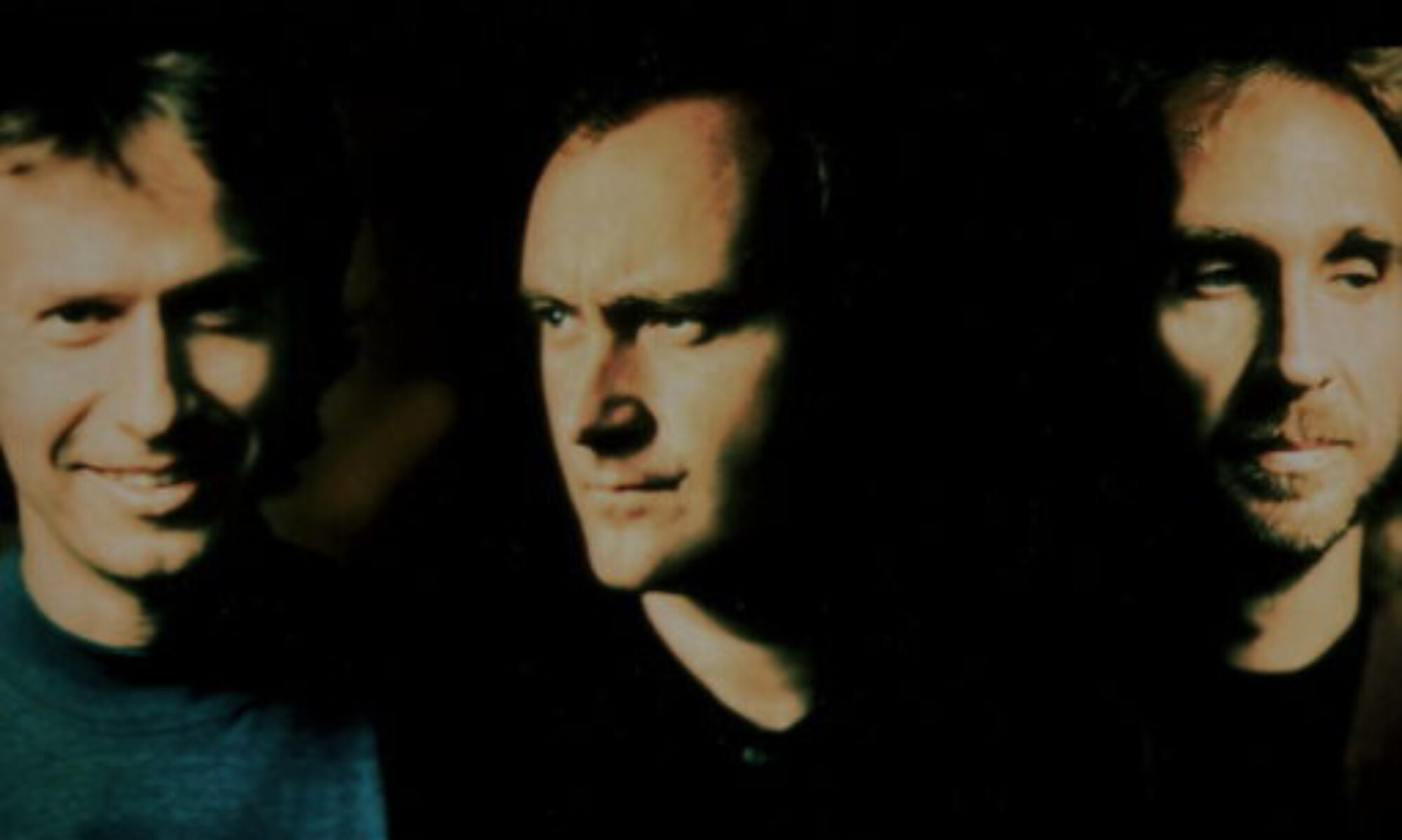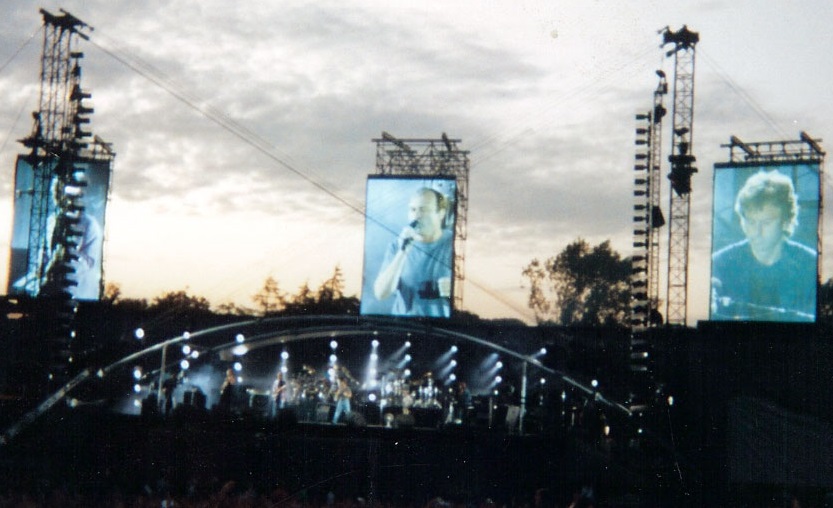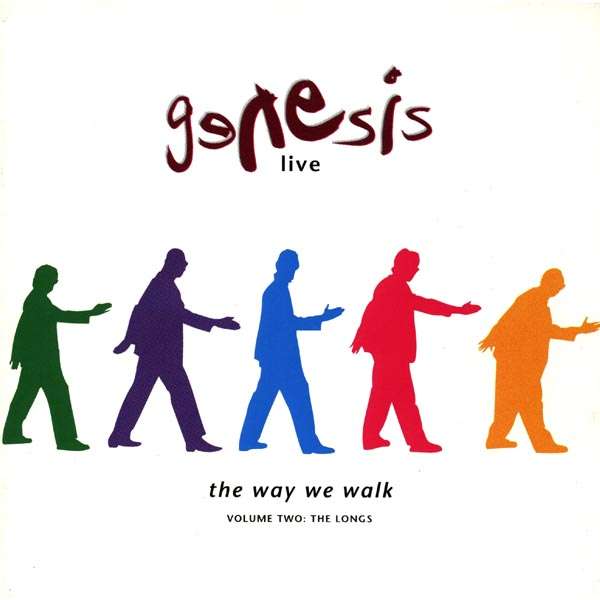Tampa, Florida, 17 May 1992. It was only the fourth night of Genesis’ massive We Can’t Dance tour when the band had to leave the stage early after just two songs. Phil Collins was suffering from throat problems, and the show was cancelled after Land of Confusion and No Son of Mine, leaving a restless crowd behind. Thankfully, it was a one-off incident. The We Can’t Dance tour would go on to become one of the band’s biggest productions ever, both in scale and ambition.
Let’s take a closer look at this monumental tour.
A Blockbuster Album: We Can’t Dance
Released in 1991, We Can’t Dance was Genesis’ 14th studio album and it became another global smash. Even after nearly 25 years in the business, the band were still topping charts around the world. The album spawned four hit singles: No Son of Mine, I Can’t Dance, Hold On My Heart, and Jesus He Knows Me. Each of them came with its own high-budget music video. I Can’t Dance and Jesus He Knows Me, in particular, stood out for their sharp humour and clever production.
Stadiums, Screens, and Scale: The We Can’t Dance Tour
Naturally, such a successful album deserved a tour to match. More than 60 shows were scheduled across North America and Europe in 1992. While Genesis weren’t entirely comfortable with stadium gigs, they ultimately preferred three months of large-scale shows over a ten-month arena tour. The goal was clear: keep the tour tight and efficient.
The production went up a notch: three massive Sony Jumbotron video screens were installed behind the stage, ensuring that fans even in the furthest rows could see the band up close. Rehearsals took place inside the enormous Goodyear Blimp hangar in Houston, one of the few places big enough to house the full setup.
The Setlist and the Line-Up
Tony Banks, Phil Collins, and Mike Rutherford were joined once again by their trusted touring musicians Chester Thompson (drums) and Daryl Stuermer (guitar and bass). After weeks of rehearsals, the setlist came together: mostly material from We Can’t Dance, along with select tracks from Invisible Touch and Genesis, and of course the classic encore Turn It On Again.
A 20-minute medley brought back highlights from the band’s 1970s output. It was a refreshing change from the long-standing In the Cage medley, which had featured in live shows for years.
Trouble in Tampa
The tour kicked off on 8 May 1992 in Texas. But disaster struck on night four in Tampa. Phil Collins’ voice simply gave out. He had always taken care of his voice while on tour, using various treatments when needed and he knew the crowd could sing along if he had to take it easy. But this time, he just couldn’t go on. After Land of Confusion and No Son of Mine, the band had no choice but to walk off stage.
Fortunately, Phil recovered quickly, and the rest of the tour went ahead as planned. The first leg concluded in August with a massive open-air concert at Knebworth Park, which was broadcast on Premiere. The second leg kicked off in the autumn, taking the band across the UK, a region they hadn’t toured extensively during the 1980s. They made up for it with multiple dates at London’s Earl’s Court, which were filmed and later released as The Way We Walk: Live in Concert.
The Way We Walk – Capturing the Tour
The tour also resulted in a live double album: Live – The Way We Walk, split into two volumes — The Shorts and The Longs. Rather than presenting an entire show in sequence, the band divided the material into their hit singles and their longer, progressive epics. Some fans didn’t love this format, but it made sense at the time: casual listeners knew the hits, while long-time fans appreciated the deeper cuts. Later editions of the album would restore the original running order.
The Last Dance (For a While)
Unbeknownst to fans and band members alike, the We Can’t Dance tour would be the last Genesis tour with Phil Collins until the 2007 reunion. It was also the final tour for Chester Thompson and Daryl Stuermer, at least for the next 15 years.
No one knew it at the time, but this was the end of an era. For many fans, 1992 was the last chance to see this iconic lineup live. But, as Genesis fans now know, there was more to come — eventually.
Title photo: Genesis Live- Land Of Confusion. Photo taken during the performance by Genesis of “Land of Confusion” in Knebworth, England (August 2nd, 1992). Source: Wikimedia Commons, Manny Hernandez/ CC-BY-SA-2.5 (https://creativecommons.org/licenses/by/3.0).



